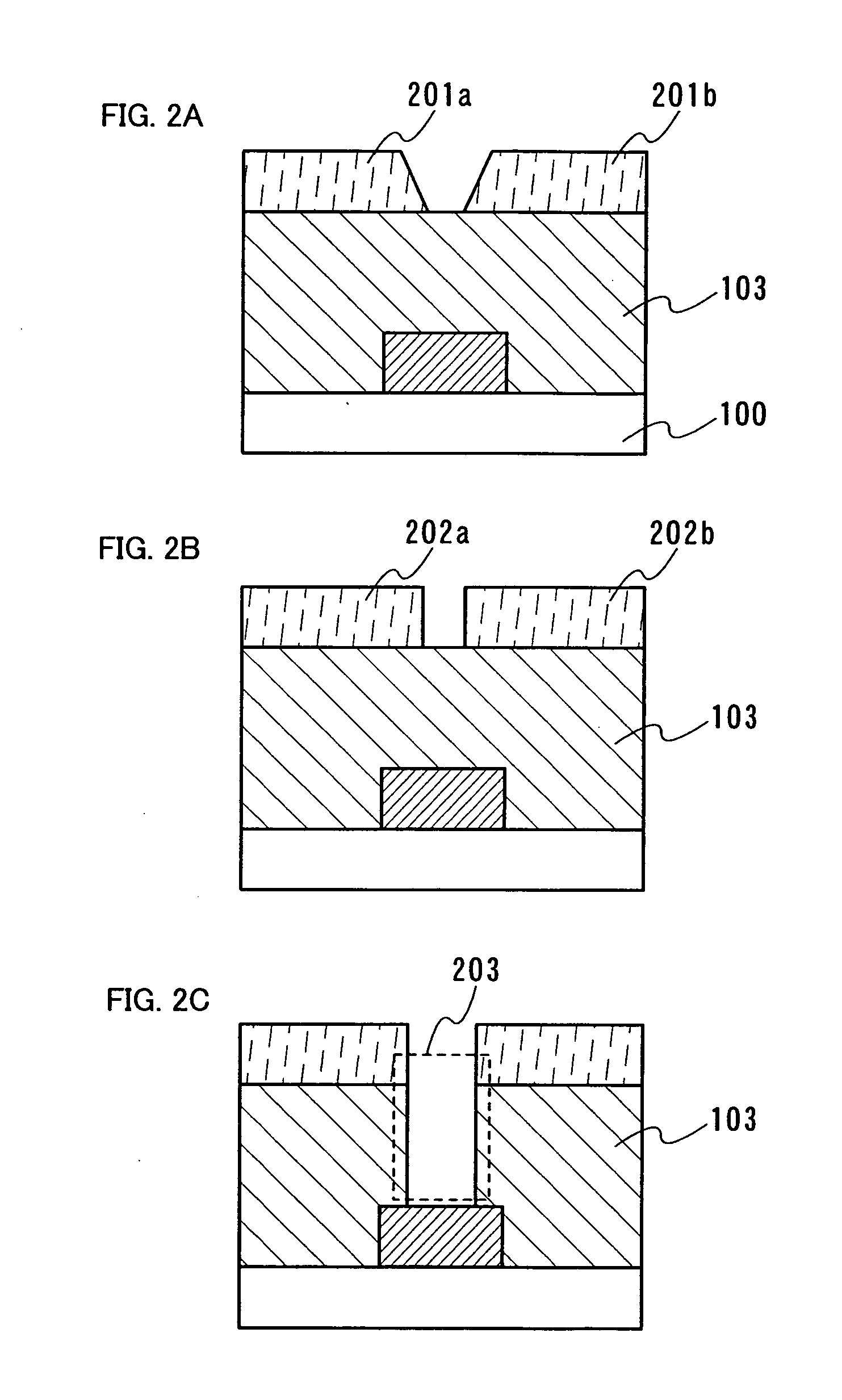Manufacturing method of insulating film and semiconductor device
a manufacturing method and technology of insulating film, applied in the direction of dielectric characteristics, instruments, optics, etc., can solve the problems of reduced adhesiveness between the top and bottom layers, mechanical strength of the interlayer insulating film, and difficulty in manufacturing semiconductor devices with high yield, so as to prevent damage, suppress parasitic capacitance between wires, and high yield
- Summary
- Abstract
- Description
- Claims
- Application Information
AI Technical Summary
Benefits of technology
Problems solved by technology
Method used
Image
Examples
embodiment mode 1
[0061] Described in this embodiment mode are a manufacturing method of an insulating film having pores (also called voids) and a forming method of a metal wire without using a CMP step. That is, description is made on a method where pores are formed using an fs laser after forming an insulating film. Description is also made on a method of forming a metal wire by discharging a composition containing a conductive material by a droplet discharge method.
[0062] An embodiment mode of the invention is described with reference to FIG. 1A. This embodiment mode uses an insulating substrate 100 having elements such as transistors (not shown) formed by a common manufacturing process of a semiconductor device.
[0063] A metal wire 102 is formed over the insulating substrate 100. The metal wire 102 is obtained in the following manner. First, a metal film is formed by a known method such as printing, electroless deposition, electrolytic plating, PVD (Physical Vapor Deposition), CVD (Chemical Vapo...
embodiment mode 2
[0109] In this embodiment mode, forming steps of a porous insulating film and wires over a single crystalline semiconductor substrate are described with reference to FIGS. 10A to 10E.
[0110] As shown in FIG. 10A, element isolation regions 503 to 505 are formed over a substrate 500. The substrate 500 is a single crystalline semiconductor substrate or a compound semiconductor substrate, and typically, an N-type or P-type single crystalline silicon substrate, a GaAs substrate, an InP substrate, a GaN substrate, a SiC substrate, a sapphire substrate, a ZnSe substrate or the like. Instead, an SOI (Silicon On Insulator) substrate may be used. In this embodiment mode, a single crystalline silicon substrate is used as the substrate 500. The element isolation regions 503 to 505 may be formed by a known method such as a selective oxidation method (LOCOS: Local Oxidation of Silicon) and a trench isolation method. In this embodiment mode, silicon oxide films are formed as the element isolation ...
embodiment 1
[0119] Manufacturing steps of an active matrix substrate and a display panel having it are described with reference to FIGS. 1A to 11D, FIGS. 12A to 12C, and FIGS. 13 and 14. In this embodiment, a liquid crystal display panel is used as the display panel. FIG. 14 is a plan view of an active matrix substrate, and FIGS. 11A to 11D, FIGS. 12A to 12C and FIG. 13 are schematic views showing longitudinal cross sectional structures along a line A-B in a connecting terminal portion and lines C-D and E-F in a pixel portion of FIG. 14.
[0120] As shown in FIG. 11A, a first insulating film 801 with a thickness of 100 nm is formed on the surface of a substrate 800. In this embodiment, a silicon nitride film is formed by plasma CVD as the first insulating film 801. A first conductive film is formed over the first insulating film 801 and a mask is formed over the first conductive film. The first conductive film is etched using the mask to form a first conductive film 802a functioning as a gate wir...
PUM
| Property | Measurement | Unit |
|---|---|---|
| diameter | aaaaa | aaaaa |
| relative dielectric constant | aaaaa | aaaaa |
| porosity | aaaaa | aaaaa |
Abstract
Description
Claims
Application Information
 Login to View More
Login to View More - R&D
- Intellectual Property
- Life Sciences
- Materials
- Tech Scout
- Unparalleled Data Quality
- Higher Quality Content
- 60% Fewer Hallucinations
Browse by: Latest US Patents, China's latest patents, Technical Efficacy Thesaurus, Application Domain, Technology Topic, Popular Technical Reports.
© 2025 PatSnap. All rights reserved.Legal|Privacy policy|Modern Slavery Act Transparency Statement|Sitemap|About US| Contact US: help@patsnap.com



